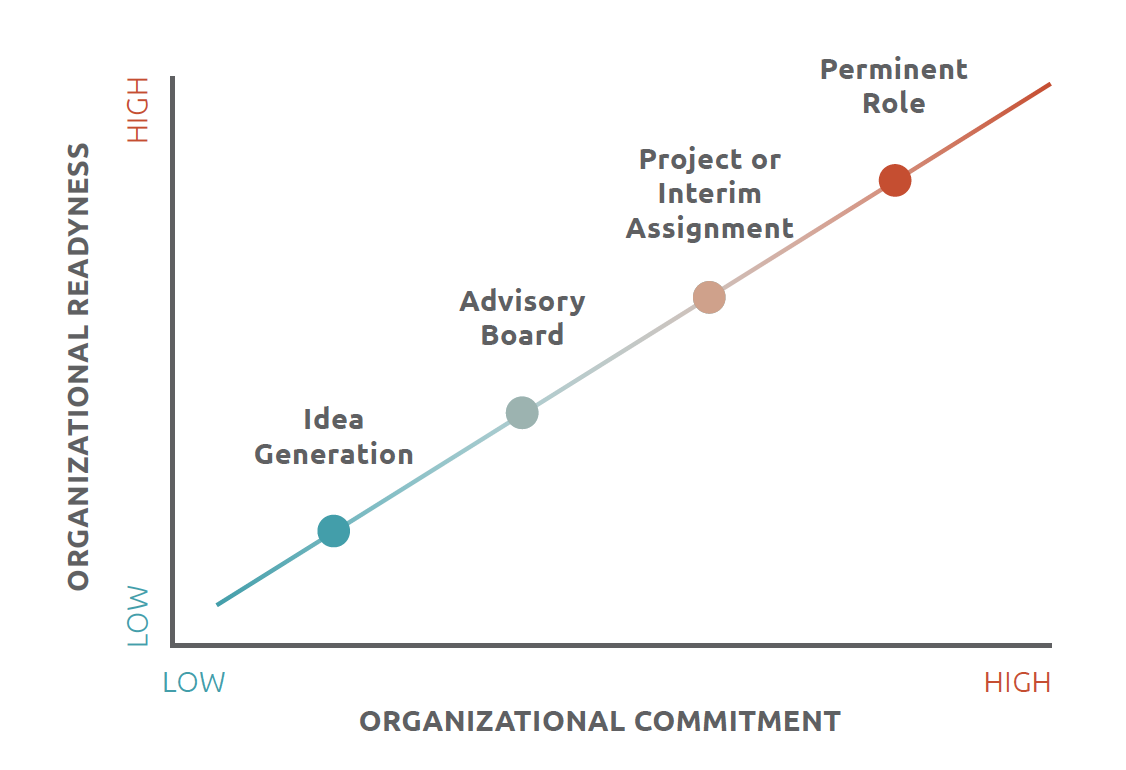There is no question that terms like ‘digital disruption’ and ‘innovation’ have become buzz words used daily in most boardrooms and c-suite offices. Competing in the new normal requires organizations to find talent who do things in different ways. The challenge is however, that many of these disruptors often struggle to work in the constraints of a traditional organization.
In order to achieve desired results, business leaders need to make sure that they:
Many disruptors often struggle to work in the constraints of a traditional organization.
- Find the right type of disruptors
- Engage disruptive talent in a way that aligns to their organizational commitment and readiness
- Invest sufficient energy and effort to maximize the engagement and success of disruptive talent
Finding The Right Disruptors
Not all disruptors are created equally, and investing in the wrong type of talent can cause significant chaos and negatively impact business performance and organizational culture.
Many organizations are beginning to look for people who can spot opportunities to do things differently and implement their ideas. While generating ideas and getting things done are both critical, disruptive talent who can truly have a positive impact on business results also need to have skills and competencies like self-confidence, resilience, the ability to build relationships and the flexibility required to work within the constraints of an organization.
Engaging Disruptors
To successfully engage this newly sought after type of talent, organizations need a strategy to define how they will engage with talent. Many leaders think that the only option is to hire disruptors, but there are a number of different ways to get started leveraging disruptors.
To determine the right engagement method (i.e., whether to involve, borrow or hire), business leaders first need to take a look at two important factors:
1. Commitment to Innovation and Change
In order to maximize the return on the investment in disruptive
talent, organizations first need to ensure that there is senior
leader commitment for innovation. That commitment must
include dedicated funding for innovation.
If an organization can’t check off these two mission critical
items, they can still leverage disruptors. For example, they can
engage external disruptors in idea generation activities like
hackathons, or crowdsource their ideas through technology
platforms. An organization can also consider forming an
advisory board to help guide their evolution, borrow talent
from more innovative companies to work on specific projects
or consider trying a strategic interim position to test the waters.
2. Readiness for Change
Organizations must also consider their overall readiness for
this productive type of disruption. Many organizations may
be committed to doing things differently, but simply are not
ready as a result of factors like:
- Their Culture (e.g., level risk tolerance/risk management capabilities, agility, customer centricity, learning orientation, etc...)
- Innovation maturity (e.g., existence of formal strategy, process, governance, etc...)
- Technology readiness (e.g., technology investment, enterprise architecture, etc....)
- Strength of eco-system partners (e.g., relationships with innovation accelerators, technology vendors, academic institutions, etc...)

Maximizing The Engagement And Success Of Disruptive Talent
Once an organization finds the right disruptive talent, there is a lot of work that still needs to go in to ensuring a good return in the investment. For example, organizations should ensure that disruptor has:
- Executive Sponsorship
- A peer mentor 'informal' aspects of the organization
- Manager support to clear roadblocks
- Connection to other disruptors - to avoid feelings of not fitting in/ isolation
- Frequent feedback - often gauged against different performance criteria
- Professional coaching - especially early to ensure successful transition
Summary
Finding and engaging talent who can productively disrupt current thinking can be extremely effective and deliver significant business value to an organization. As with everything in business it starts with having a strategy to find the right people, engage them in the right way and ensure that they have the support required to succeed. Organizations can get started by:
- Establishing an innovation strategy with proper governance (if that hasn't been done).
- Assessing their readiness and identifying an appropriate disruptive talent engagement strategy.
- Using assessments during the hiring process to confirm that potential disruptors have the right competencies.
- Setting up formal mentoring programs.
- Engaging professional coaches to better ensure a smooth transition and long term success.



.png)

.png)

.jpg)


What Did You Think?